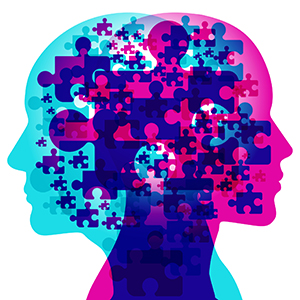 The American Psychiatric Association has announced revisions to the DSM 5 which will be released in March 2022. The revised manual, Diagnostic and Statistical Manual of Mental Disorders, Fifth Edition, Text Revision (DSM-5-TR) is used by clinical social workers and other health care professionals in the United States as the authoritative guide to the diagnosis of mental disorders.
The American Psychiatric Association has announced revisions to the DSM 5 which will be released in March 2022. The revised manual, Diagnostic and Statistical Manual of Mental Disorders, Fifth Edition, Text Revision (DSM-5-TR) is used by clinical social workers and other health care professionals in the United States as the authoritative guide to the diagnosis of mental disorders.
Last updated in 2013, significant changes include the addition of prolonged grief disorder, the inclusion of symptom codes for suicidal behavior and non-suicidal self-injury, refinement of criteria, updates to diagnostic criteria, and specifier definitions. A brief overview of the changes is provided below.
Clinical social workers may purchase a copy of the DSM-5-TR from Amazon, any large bookstore, or from the American Psychiatric Association.
Prolonged Grief Disorder
- It occurs in individuals, who have experienced a death of a person close to them over a 12-month period for adults and 6 months for children and adolescents.
- The grief response persists following the death and is characterized by intense yearning/longing for the deceased or preoccupation with thoughts of the deceased.
- Children and adolescents, however, may be preoccupied by the circumstances surrounding death.
- Severity and duration of the grief response exceeds cultural, social, and religious norms.
- Presentation of symptoms are not attributed to another mental disorder and result in significant distress or impairment in daily functioning.
- It must also exhibit three or more of the following symptoms that are clinically significant most days. Symptoms must be present almost every day for at least 30 days:
- Intense emotional pain related to the death.
- Avoidance of reminders that the person is dead (in children and adolescents, may be characterized by efforts to avoid reminders).
- Marked sense of disbelief about the death.
- Difficulty reintegrating into one’s relationships and activities after the death.
- Identity disruption since the death.
- Intense loneliness as a result of the death.
- Emotional numbness (absence or marked reduction of emotional experience) as a result of the death.
- Feeling that life is meaningless as a result of the death.
Symptomatic Codes for Suicidal and Non-Suicidal Self-Injurious Behavior
New symptomatic codes identify the presence or history of suicidal and non-suicidal self-injurious behaviors. Researchers will now have a systematic way to track prevalence of these behaviors and other correlating factors that need ongoing attention.
Diagnostic Criteria
The new manual provides updates and modifications to the set of criteria for over 70 disorders with revised descriptive text for a number of disorders. It also contains an analysis of the effects racism and discrimination on the manifestation and diagnosis of mental disorders.
Diagnostic criteria for several disorders were clarified, to include the following diagnoses:
- Major depressive disorder
- Cyclothymic disorder
- Autism spectrum disorder
- Avoidant-restrictive food intake disorder
- Bipolar I and bipolar II disorder
- Manic episode
- Persistent depressive disorder
- Post-Traumatic Stress Disorder in children
- Attenuated psychosis syndrome (in the chapter “Conditions for Further Study”)
- Substance/medication-induced mental disorders
- Delirium
Additionally, changes to criteria were amended to include:
- The return of “Unspecified Mood Disorder” for mixed-mood presentations that do not fit the criteria for bipolar or depressive disorders
- Coding updates for substance use and neurocognitive disorders
- The inclusion of symptom codes that specify the presence or history of non-suicidal self-injury and suicidal behavior
Specifier Definitions
Changes to specifier definitions were also identified and are as follows:
- the post-transition specifier for gender dysphoria
- the acute/persistent specifier for adjustment disorder
- Narcolepsy specifiers
- the mood congruent/mood incongruent specifier for bipolar disorder
- the mixed features specifier for major depressive disorder and
- Manic Episode
Other Changes
- The term “neuroleptic,” which refers to a class of medication, will only be used when referring to “neuroleptic malignant syndrome” and will now be replaced with “antipsychotic medication” or other terms depending on the context.
- “Desired gender” will be referred to as “experienced gender.”
- “Cross-sex medical procedure” will now be regarded as “gender-affirming medical procedure,”
- “natal male”/“natal female” will be called “individual assigned male/female at birth.”
- Conversion disorder is now functional neurological symptom disorder.
- intellectual disability is now intellectual developmental disorder.
Reference
Updated DSM-5 text revisions to be released in March – Psychiatric News
Prepared by Denise Johnson, LCSW-C, NASW Senior Practice Associate, Clinical Social Work



